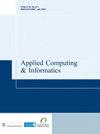Modeling of mobile channels using TIMS in IT education
IF 4.9
Q1 COMPUTER SCIENCE, INFORMATION SYSTEMS
引用次数: 1
Abstract
PurposeThe purpose of this paper is to directly link information technology (IT) education with real-world phenomena.Design/methodology/approachThe selected objectives are achieved by modeling line of sight (LOS) and nonline of sight (NLOS) mobile channels using corresponding distributions. Within the described experiments, students verify whether modeled generators generate random variables accordingly to the selected distribution. The results of observations are directly compared with theoretical expectations. The methodology was evaluated by students via questionnaires.FindingsThe results show that the proposed methodology can help graduate or undergraduate students better comprehend lectured material from mobile communications or mathematical statistics.Originality/valueThe hands on experience using the EMONA system make the approach original.TIMS在信息技术教育中的移动渠道建模
本文的目的是将信息技术教育与现实世界的现象直接联系起来。设计/方法/方法通过使用相应的分布对瞄准线(LOS)和非瞄准线(NLOS)移动信道进行建模来实现所选目标。在所描述的实验中,学生验证模型生成器是否根据所选分布生成随机变量。观测结果与理论预期直接比较。学生通过问卷对方法进行评估。结果表明,所提出的方法可以帮助研究生或本科生更好地理解来自移动通信或数理统计的讲座材料。独创性/价值使用EMONA系统的实际经验使该方法具有独创性。
本文章由计算机程序翻译,如有差异,请以英文原文为准。
求助全文
约1分钟内获得全文
求助全文
来源期刊

Applied Computing and Informatics
Computer Science-Information Systems
CiteScore
12.20
自引率
0.00%
发文量
0
审稿时长
39 weeks
期刊介绍:
Applied Computing and Informatics aims to be timely in disseminating leading-edge knowledge to researchers, practitioners and academics whose interest is in the latest developments in applied computing and information systems concepts, strategies, practices, tools and technologies. In particular, the journal encourages research studies that have significant contributions to make to the continuous development and improvement of IT practices in the Kingdom of Saudi Arabia and other countries. By doing so, the journal attempts to bridge the gap between the academic and industrial community, and therefore, welcomes theoretically grounded, methodologically sound research studies that address various IT-related problems and innovations of an applied nature. The journal will serve as a forum for practitioners, researchers, managers and IT policy makers to share their knowledge and experience in the design, development, implementation, management and evaluation of various IT applications. Contributions may deal with, but are not limited to: • Internet and E-Commerce Architecture, Infrastructure, Models, Deployment Strategies and Methodologies. • E-Business and E-Government Adoption. • Mobile Commerce and their Applications. • Applied Telecommunication Networks. • Software Engineering Approaches, Methodologies, Techniques, and Tools. • Applied Data Mining and Warehousing. • Information Strategic Planning and Recourse Management. • Applied Wireless Computing. • Enterprise Resource Planning Systems. • IT Education. • Societal, Cultural, and Ethical Issues of IT. • Policy, Legal and Global Issues of IT. • Enterprise Database Technology.
 求助内容:
求助内容: 应助结果提醒方式:
应助结果提醒方式:


